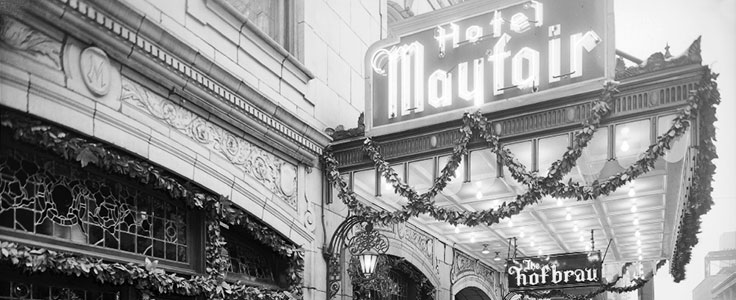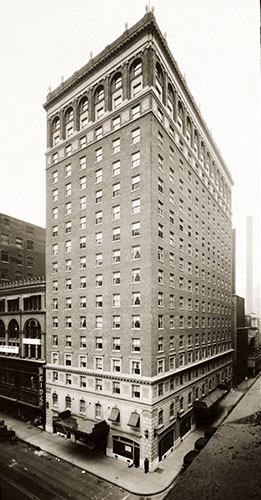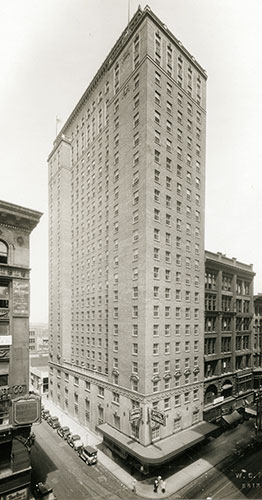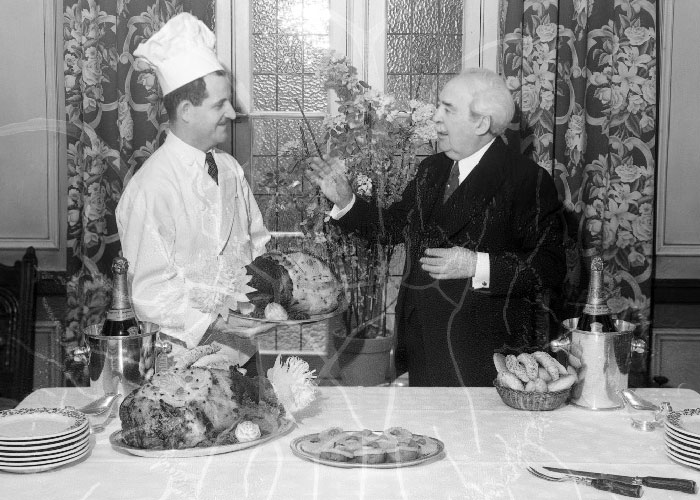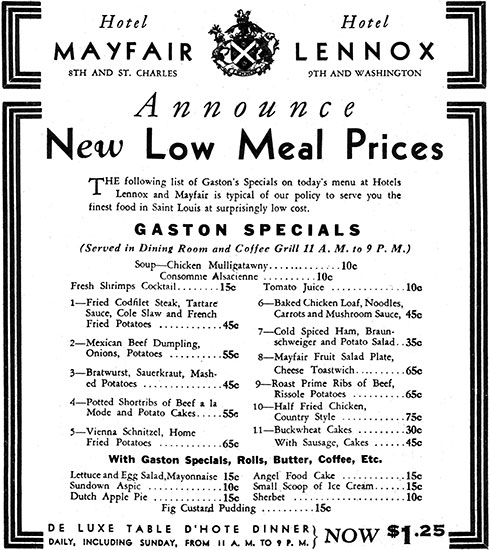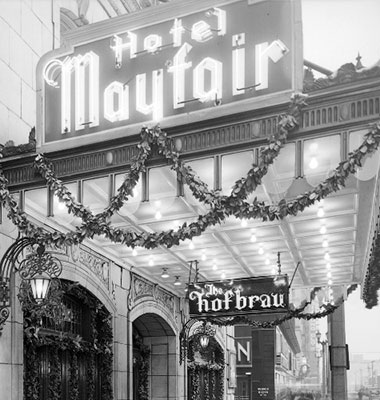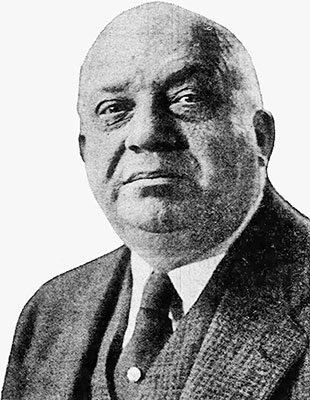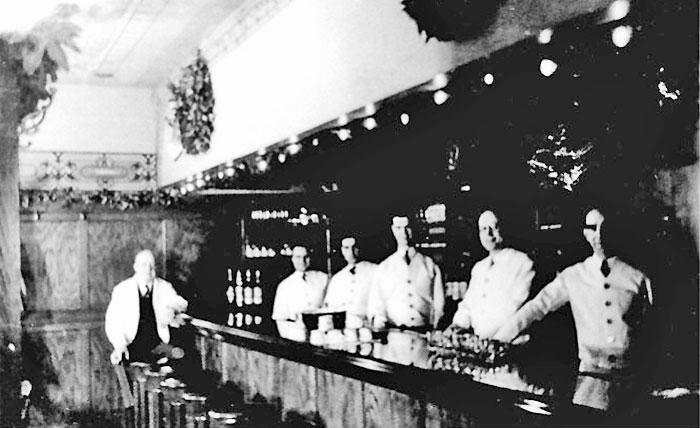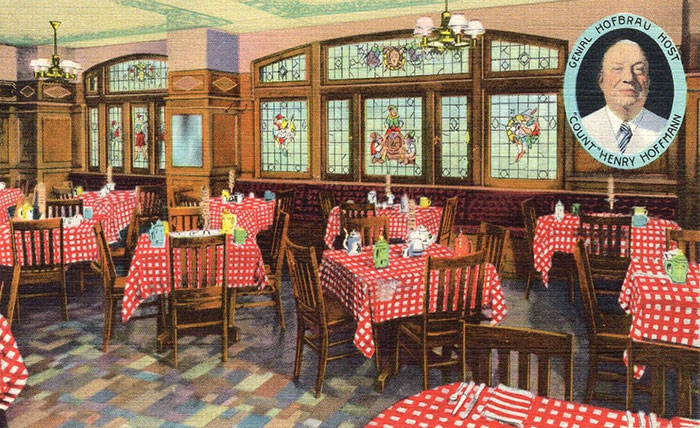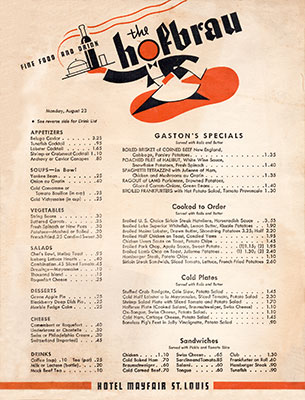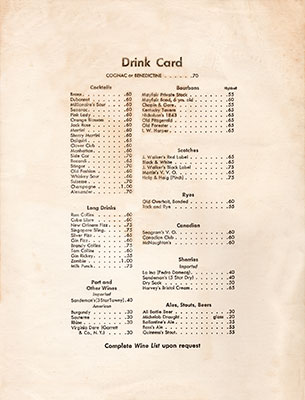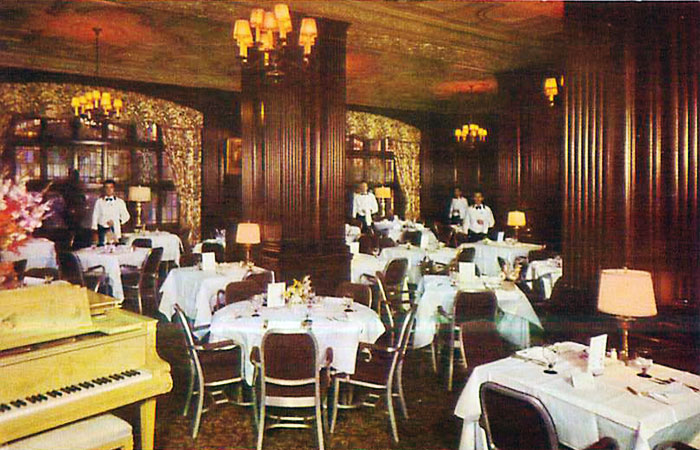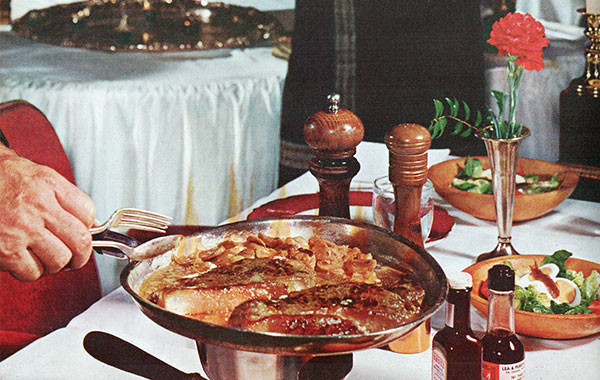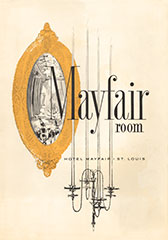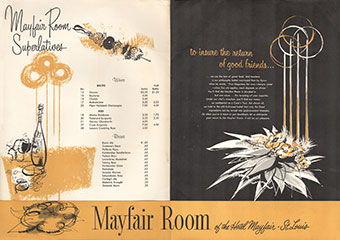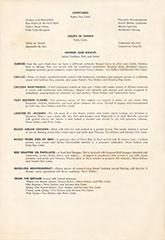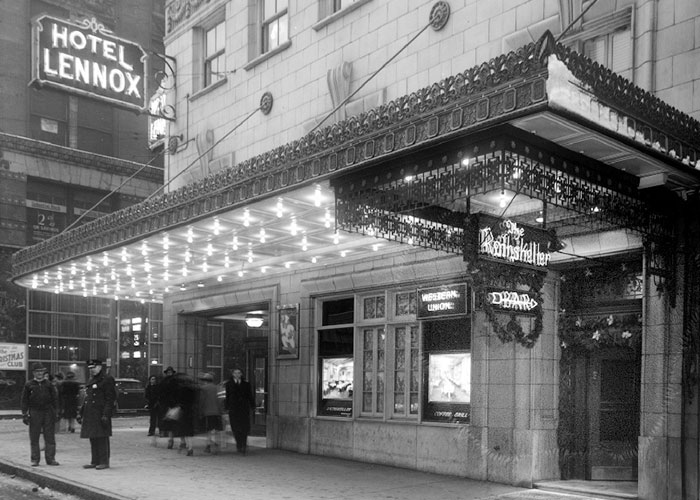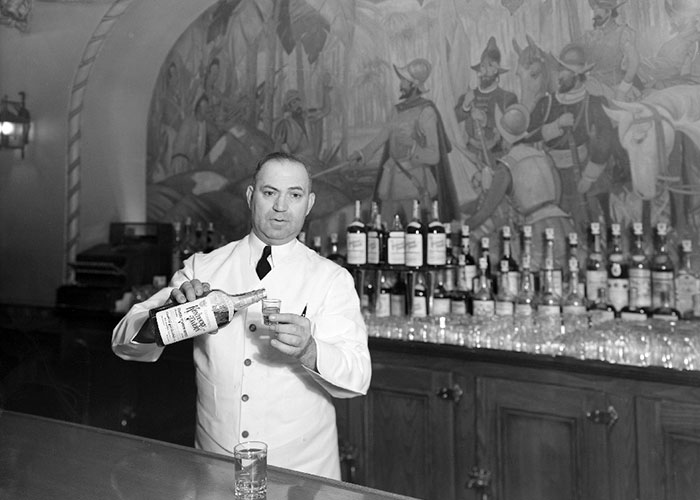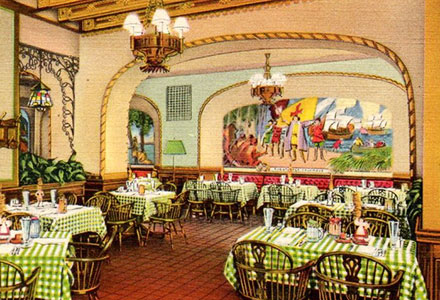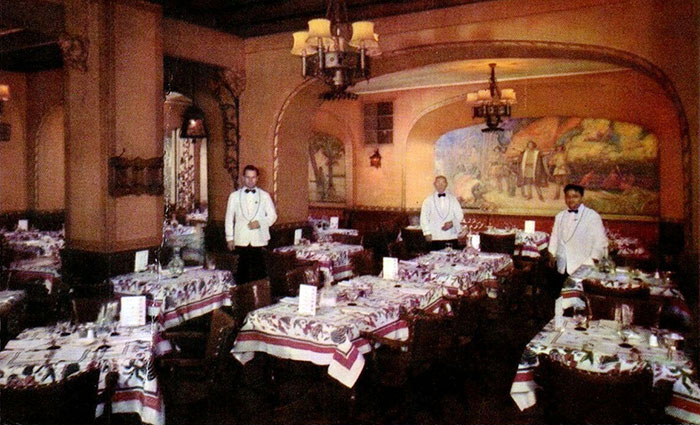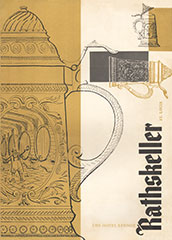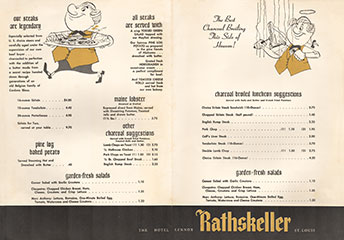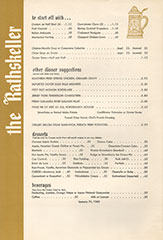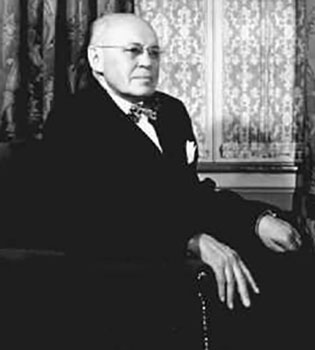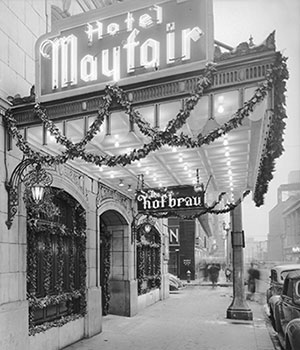|
Mayfair-Lennox Charles Heiss was born on January 19, 1883 in Augsburg, Bavaria, Germany. Heiss started in the hotel business as a 15-year-old busboy at the Victoria Hotel in Heidelberg. He worked at hotels in Belgium, France, England and Canada before immigrating to the United States in 1912 to work as assistant manager of the Knickerbocker Hotel in New York City. Heiss was hired by the Statler Hotel chain to manage its hotel in Detroit. In 1915, he was transferred to St. Louis to manage the Hotel Statler on Washington Avenue. A story is told that Heiss had an argument with Mr. Statler and declared, "Someday I'm going to build two hotels close to yours and they'll be better than yours."
Heiss kept his word. The Hotel Mayfair opened at St. Charles and Eighth Street, a block behind the Statler,
in 1925, and the Hotel Lennox opened across Washington Avenue from the Statler
in 1929.
The Hotel Mayfair formally opened to the public on April 29, 1925. The name Mayfair was taken from an affluent area in the West End of London. The eighteen-story hotel had 400 guest rooms, each with a private bath. Charles Heiss was president and manager. Heiss opened the 25-story, 400-room Hotel Lennox on September 2, 1929. The Lennox operated as a commercial hotel, catering to salesmen, with no ballroom or large banquet hall. Both the Mayfair and Lennox had large dining rooms off their lobbies. Both lobbies were small; Heiss sought to discourage lobby-sitting and promote profits on food and drink. He was quoted as saying, "If the guests at the Mayfair and Lennox want to lobby-sit, they can go across the street to the Statler." Both hotels had coffee shops in their basement, which by 1932 were called coffee grills.
Edward P. Voegeli, often referred to as Gaston,
was the celebrated head chef at the Hotels Mayfair and Lennox. Voegeli, born in Switzerland, was apprenticed as a chef at the age
of 16. After working at such famous European hostelries as the
Claridge Hotel in London and as a chef in the British Navy, Voegeli
came to the Windsor Hotel in Canada and then worked at restaurants
throughout the eastern United States. He became head chef at the
Mayfair when it opened in 1925, taking on the same title at the
Lennox when it opened.
Voegeli was well known in St. Louis. Starting in 1929, he had a Saturday morning "Famous Recipes" show on KMOX radio. In an October 9, 1931 St. Louis Star interview, Voegeli opined on the change in America's dining habits.
Edward Voegeli was instrumental in changing American dining habits by originating the "salad plate" for lunch. He believed salads were more than greens with French dressing to serve on the side with a full course dinner. His salad plates were featured on early Mayfair and Lennox menus.
Another of the Mayfair-Lennox's colorful characters was "Count" Henry Hoffmann. Hoffmann came to St. Louis at age 13 from Carlyle, Illinois. He worked at various jobs until he became associated with James H. McTague's famous restaurant in the Century Building. He was head bartender at McTague's for twenty-one years, acquiring a substantial following of friends and the name the "Count."
No crystal gleamed more brightly than the
glassware behind Hoffmann's bar; no white jacket was more immaculate
than his; no smile more radiant for arriving guests. He could down
incalculable quantities of soft drinks just to be sociable when
someone wanted to buy for the crowd, but he never touched liquor
himself.
With the advent of Prohibition in 1920, McTague's was forced to close. While Hoffmann could no longer use his bartending skills, he served as master-of-ceremonies at private parties. When Prohibition was repealed in 1933, the "Count" was hired by Charles Heiss.
Hoffmann was hired to usher back a more formal manner of dining, lost during Prohibition, as he articulated in a December 14, 1933 St. Louis Post-Dispatch article.
Hoffman was initially hired as wine steward at the Hotel Mayfair.
When The Hofbrau opened
off the Mayfair lobby in 1933, the "Count" became its manager.
The Hofbrau was a place to get
a "sandwich and a cold stein" or a bedtime snack. It was decorated
with German murals, a reminder of the hotel's European influence.
Vibrant stained glass windows showed lute players, imbibing
gentlemen and bashful maidens. "Count" Henry Hoffmann presided over
the Hofbrau's long bar – guide, philosopher and friend to its
patrons.
Baseball was Henry Hoffmann's grand passion; he seldom missed a game. He was known to baseball men and sports writers in every major league city. In the winter of 1936, Hoffmann developed a heart condition. His doctors advised him to avoid excitement.
On April 29, 1936, Hoffmann attended a game at
Sportsman's Park between the Cardinals and the New York Giants. The
game went into extra innings, with the winning run crossed the plate for the Cardinals in the bottom of the
seventeenth. As the crowd cheered, "Count" Henry Hoffmann's
head dropped to the shoulder of the man beside him. He was dead. Shortly after The Hofbrau opened in 1933, the Hotel Mayfair branded its main dining area, dubbing it the Mayfair Room. The Mayfair Room was among the best restaurants in the country for many years and was the first five-star restaurant in Missouri. From 1956 through 1962 it won the Holiday Magazine award for Dining Distinction. Dark woods,
old prints and crystal candelabras gave the Mayfair Room a stately,
comfortable appearance. It had sparking crystal and two white linen
tablecloths on each table. Its enormous silver serving pieces were
called "the family jewels" by the hotel manager.
Steak Diane was a Mayfair Room specialty. Named after the Goddess of the Hunt, the prime sirloin cut was described on the menu as seared and sautéed in butter, along with shallots and mushrooms, after which the entrée was flamed with brandy. According to
Marian O’Brien, St. Louis Globe-Democrat food editor of the
time, "There sometimes is so much brandy aflame in the Mayfair Room
that one can’t help but hope that it won’t get out of hand!"
The Prosperity Sandwich was also a fixture on the Mayfair Room menu. Described as "turkey on toast, creamed mushrooms, bacon, au gratin," it was created by Edward Voegeli. Edward Voegeli did not create the Mayfair Room's famous salad dressing. There are reports that the creamy anchovy based dressing was developed about 1935 by chef Fred Bangerter. However, Bangerter was working at the Claridge Hotel at that time, and wasn't at the Mayfair until the late 1940s.
C. Gordon Heiss,
the son of Charles Heiss, took over the Mayfair-Lennox
organization after his father died in 1956. In a June 25,
1995 St. Louis Post-Dispatch interview, Heiss stated he had "developed
Mayfair Dressing in the 1950s when Waring Blenders became household
appliances." In the same article, Heiss divulged the
recipe for the
dressing, which had been a carefully guarded secret.
With the repeal of Prohibition in 1933, hotels
were scurrying to outfit venues where alcohol could be served. At the Hotel
Mayfair, Charles Heiss converted an old KMOX radio studio on the
second floor into a rathskeller for the anticipated return of beer.
At the Hotel Lennox, he had much grander plans. The main dining
room, two steps down from the lobby, was remodeled and reopened on
April 10, 1934 as The Rathskeller.
The Rathskeller was a downtown favorite for both lunch and dinner. The dark paneling and rich accoutrements made it warm and comfortable. Three murals depicted exploration of the Western world. They illustrated DeSoto at the Mississippi River, Balboa at the Pacific Ocean and Christopher Columbus discovering America.
A 30-foot bar was installed along the east
wall and built-in seats lined the west wall. At its peak, six
bartenders zigzagged behind the long bar mixing drinks for a packed
house. Nightly entertainment changed every two weeks.
Tom McMahon was a bartender at The Rathskeller in the late 1930s.
* * * * * In 1959, C. Gordon Heiss and the Mayfair-Lennox Corporation opened Nantucket Cove, a fresh seafood restaurant, in the Frontenac apartment building on North Kingshighway. Heiss opened a second Nantucket Cove in Chicago in 1967.
In 1969, the two downtown hotels Charles Heiss had built to compete with the Statlers were sold by his son to a real estate developer. * * * * * Over the next two decades, the Hotels Mayfair and Lennox had multiple owners, multiple renovations and multiple identities. Their dining areas follow suit. St. Louis Post-Dispatch restaurant critic, Joe Pollack, did his best to keep track.
* * * * * A story is told that Charles Heiss had an argument with Mr. Statler and declared, "Someday I'm going to build two hotels close to yours and they'll be better than yours." Heiss kept his word. The Hotel Mayfair opened at St. Charles and Eighth Street, a block behind the Statler, in 1925, and the Hotel Lennox opened across Washington Avenue from the Statler in 1929.
The Magnolia Hotel is now at St. Charles and
Eighth Street, with Robie's restaurant off its lobby. A Courtyard by
Marriott occupies the Lennox building, with dining at the Washington
Avenue Bistro.
Copyright © 2022 LostTables.com |

